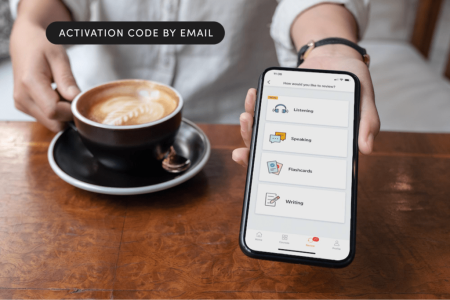Entrepreneur
I’ve spent decades as a business and management speaker, presenting to leaders about performance, leadership and building strong teams. But early in my career, I started to feel a little uneasy.
I was offering advice to audiences filled with managers and experienced business owners, many of whom had far more hands-on experience than I did. I didn’t want to be perceived as another speaker who talks theory but lacks real-world credibility. I wanted my insights to be grounded in experience, not just inspiration.
Then one day, flipping through an airline magazine, I saw an ad for Edible Arrangements. Something clicked. Franchising intrigued me because it’s a model that combines consistency and variability. Everyone follows the same system in similar markets, but performance varies. That meant there had to be a variable. If I could identify it and make it work for me, I wouldn’t just build a business — I’d gain insights I could bring to my clients.
My goal was never to leave my speaking career. It still is my primary passion. But I wanted to supplement it with a business that would sharpen my message and grow my income. That’s how I ended up opening an Edible Arrangements franchise in 2006.
Let me be clear: there was nothing “part-time” about this venture. Opening a franchise meant taking out a loan, signing a 10-year lease, investing in a buildout, managing employees, and serving customers. It required full commitment—even if I couldn’t be there every day.
Related: Is Franchising Right For You? Ask Yourself These 9 Questions to Find Out.
We faced our share of challenges, especially early on. But eventually, we built one of the highest-volume locations in California. Later, I acquired a struggling second location and made it profitable within a year. We won awards for best customer service and manager of the year out of more than 1,000 stores worldwide — all while I was still traveling for speaking engagements.
So, how did I do it? Here are six key strategies that made it possible:
1. Choose the right franchise model
Not every franchise is suited for absentee ownership, no matter what the sales team says. I chose a brand that allowed for it, but quickly learned that success still requires deep engagement. You don’t have to be physically present all the time, but you do have to be mentally present.
I looked for a business with clear systems, brand standards, and strong corporate support. I also spoke with other franchisees to ensure my dual-career setup was realistic. I wasn’t just an investor—I was still a leader, just one leading from a distance.
2. Build systems that work without you
If I weren’t going to be in the store every day, I needed systems to maintain visibility and accountability. Each night, the closing employee sent me a detailed report on sales, issues and feedback. I installed security cameras to monitor the store remotely and verify open and closing times. I could also log in to our system from anywhere to review dashboards and performance data.
Cross-training was another key strategy. Every team member could handle multiple tasks, giving us flexibility and protecting against staffing gaps.
3. Hire (and keep) the right people
Finding the right manager changed everything. My first two hires were solid but didn’t stick. The third, Jennifer, joined nine months in and stayed for the rest of my ownership. She even worked with the new owner for a year after I sold the stores.
Jennifer and I were in daily contact, even when I was on the road. When I was home, I’d visit at least once a week to stay connected with the team. I didn’t work shifts, but I maintained presence. I wasn’t micromanaging — I was culture managing.
Related: Connected for Success: 4 Crucial Values of an Interconnected Organizational Culture
4. Lead the culture — even remotely
Culture doesn’t just happen — it must be shaped. We talked often about who we were as a team and what kind of environment we wanted. We trained slowly, coached consistently and gave employees the chance to lead. Their input helped us innovate, meet goals and stay aligned.
When team members proved themselves, we gave them more autonomy. That investment paid off in loyalty and performance. The stores didn’t just feel like mine — they felt like ours.
5. Let go of control (strategically)
No one ran the business exactly like I would have. No one sold as much or cared as deeply. But they didn’t have to. I learned that if the team could operate at 80% of my personal standard, that was enough for success, and it gave me space to keep speaking and open a second location.
Letting go gave others room to step up. It made Jennifer’s job easier. And it allowed me to focus on growing the business, not just running it.
6. Manage by the numbers
When you’re not on-site, metrics become your eyes and ears. I watched weekly sales, average ticket size, expenses and customer reviews religiously. I studied every P&L. I also tracked individual employee performance so Jennifer could coach in real time when needed.
She managed the floor. I managed the numbers. That structure kept everything moving, even when I was out of town.
One of the proudest moments of my franchise journey was winning the best customer service award. It wasn’t just about sales—it was about the culture we’d built. That award confirmed what I’d come to believe: franchise success isn’t about working harder. It’s about working smarter, creating systems and growing people.
The experience didn’t just strengthen my speaking content — it transformed it. I had real stories. Real wins. Real setbacks. It all added authenticity to my message. You don’t need to give up your day job to build a successful business. But you do need to take that business seriously. Put systems in place. Lead your people. Watch your numbers. And above all, trust the team you’ve built.
That’s how you grow something great — even when you’re not there to see it.
I’ve spent decades as a business and management speaker, presenting to leaders about performance, leadership and building strong teams. But early in my career, I started to feel a little uneasy.
I was offering advice to audiences filled with managers and experienced business owners, many of whom had far more hands-on experience than I did. I didn’t want to be perceived as another speaker who talks theory but lacks real-world credibility. I wanted my insights to be grounded in experience, not just inspiration.
Then one day, flipping through an airline magazine, I saw an ad for Edible Arrangements. Something clicked. Franchising intrigued me because it’s a model that combines consistency and variability. Everyone follows the same system in similar markets, but performance varies. That meant there had to be a variable. If I could identify it and make it work for me, I wouldn’t just build a business — I’d gain insights I could bring to my clients.
The rest of this article is locked.
Join Entrepreneur+ today for access.
Read the full article here









